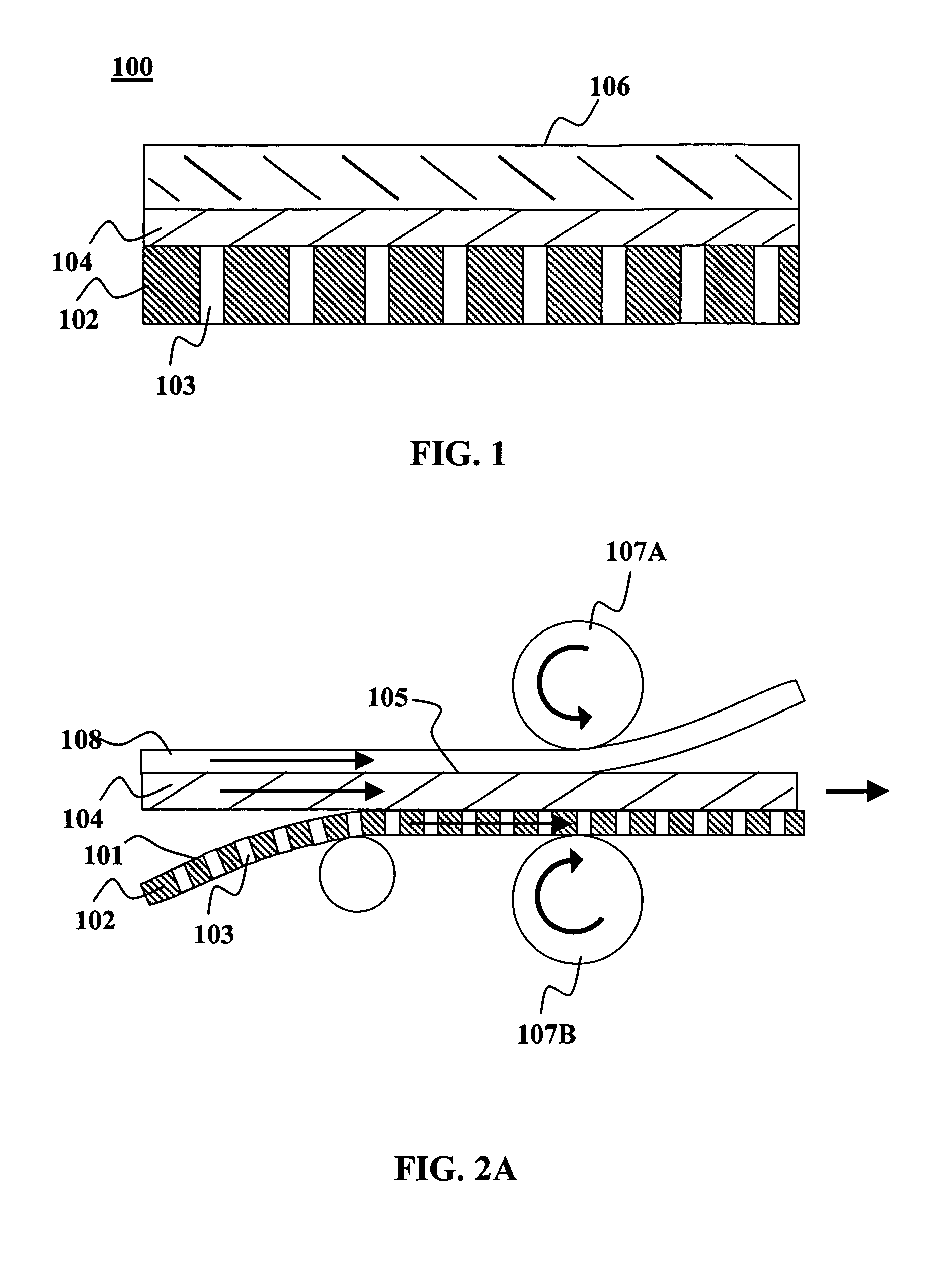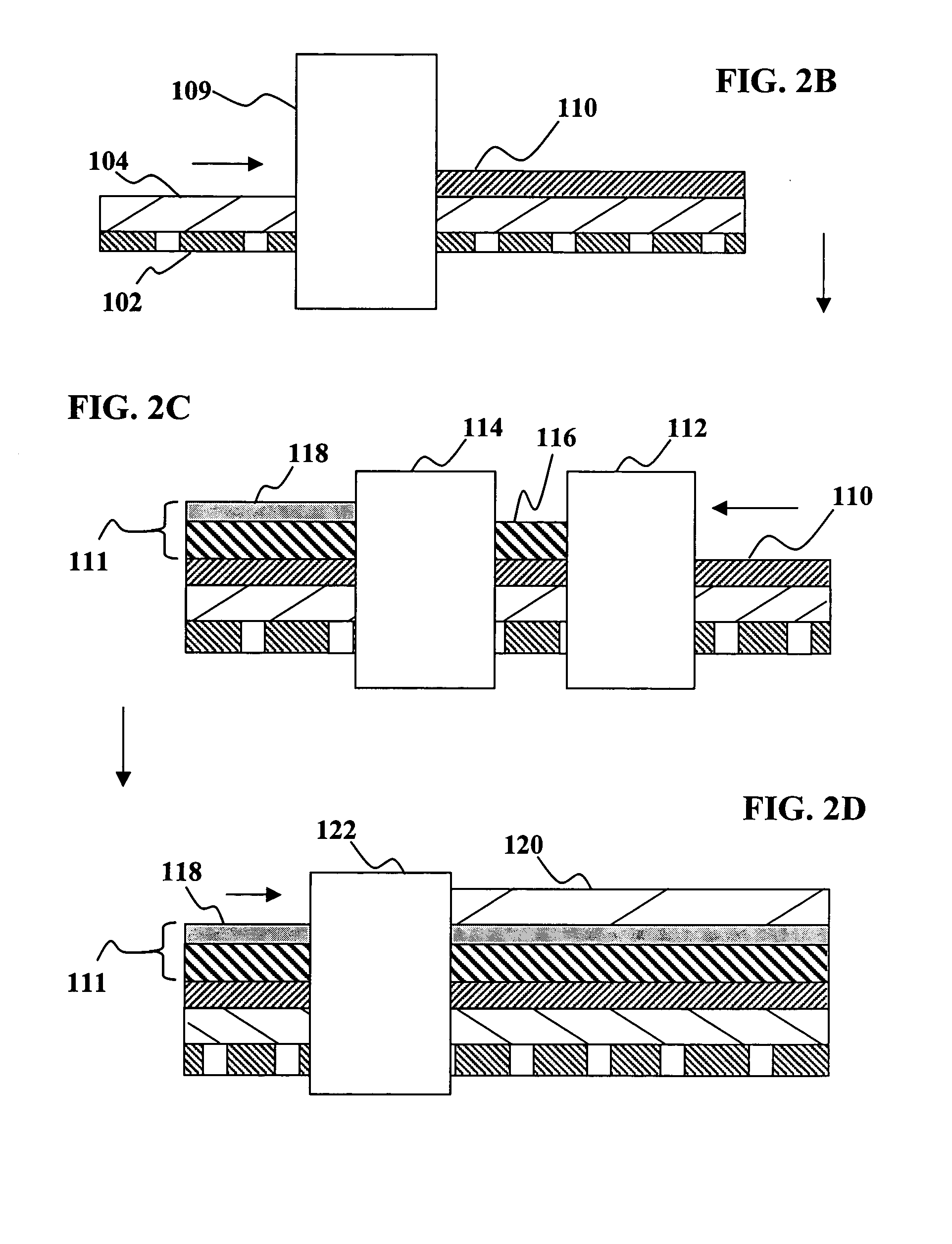Device transfer techniques for thin film optoelectronic devices
a technology of optoelectronic devices and device transfer techniques, which is applied in the field of fabric and optoelectronic devices, can solve the problems of substantial cost, significant impediment to successful commercialization, and the inability of the pet to withstand the temperature required for many desired thin film process steps
- Summary
- Abstract
- Description
- Claims
- Application Information
AI Technical Summary
Benefits of technology
Problems solved by technology
Method used
Image
Examples
Embodiment Construction
[0012]Although the following detailed description contains many specific details for the purposes of illustration, anyone of ordinary skill in the art will appreciate that many variations and alterations to the following details are within the scope of the invention. Accordingly, the exemplary embodiments of the invention described below are set forth without any loss of generality to, and without imposing limitations upon, the claimed invention.
[0013]According to embodiments of the present invention, optoelectronic devices may be fabricated on a target substrate, which is optimized for the fabrication conditions, and then transferring them to a second substrate, which is optimized for the final product (including cost). By way of example, mostly likely the second substrate would be some other inexpensive but rugged industrial polymer, such as polyethylene terephthalate (PET). In embodiments of this invention a sacrificial layer is attached to a porous target substrate, and the devi...
PUM
| Property | Measurement | Unit |
|---|---|---|
| thickness | aaaaa | aaaaa |
| thickness | aaaaa | aaaaa |
| temperatures | aaaaa | aaaaa |
Abstract
Description
Claims
Application Information
 Login to View More
Login to View More - R&D
- Intellectual Property
- Life Sciences
- Materials
- Tech Scout
- Unparalleled Data Quality
- Higher Quality Content
- 60% Fewer Hallucinations
Browse by: Latest US Patents, China's latest patents, Technical Efficacy Thesaurus, Application Domain, Technology Topic, Popular Technical Reports.
© 2025 PatSnap. All rights reserved.Legal|Privacy policy|Modern Slavery Act Transparency Statement|Sitemap|About US| Contact US: help@patsnap.com



